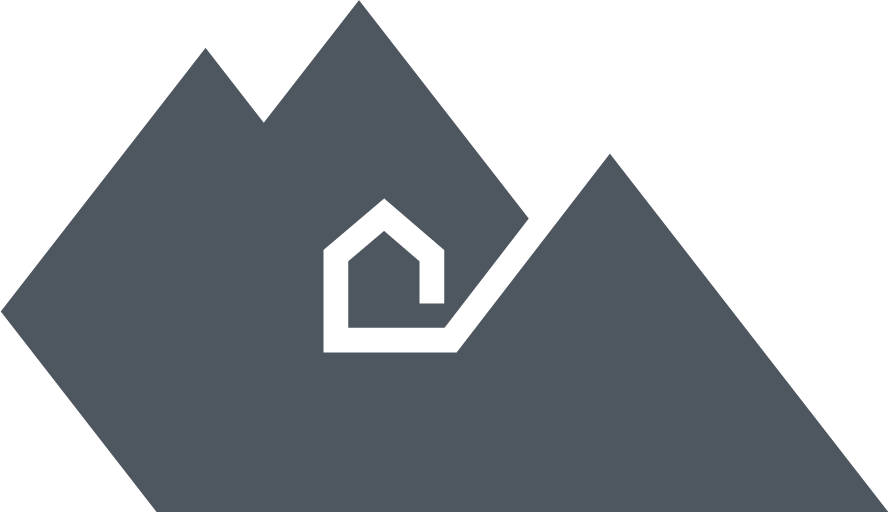
Research fellow and inventor with a passion for R&D, wood and robotics.
"I love the smell of sawdust in the morning."
Research fellow and inventor with a passion for R&D, wood and robotics.
"I love the smell of sawdust in the morning."
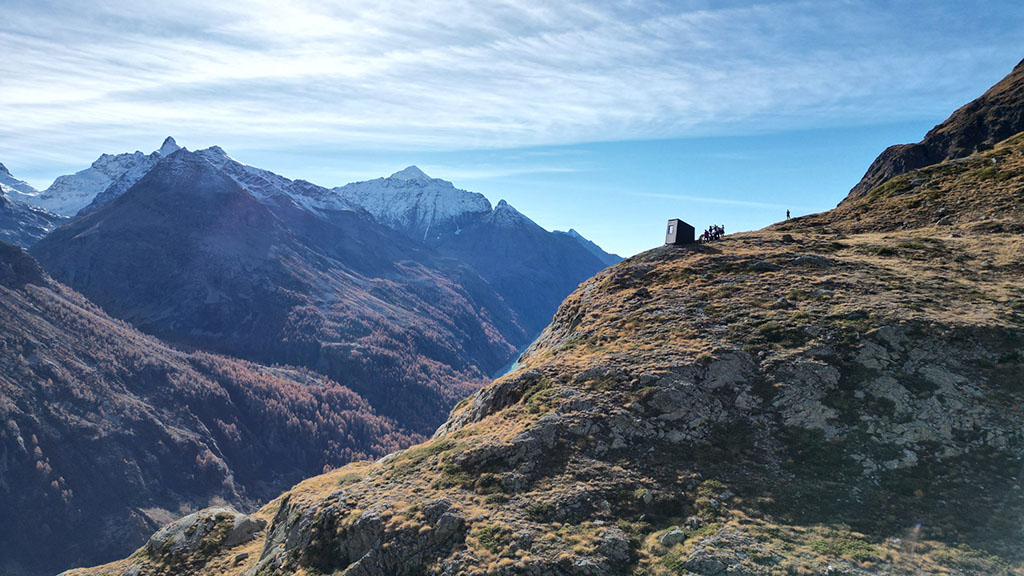
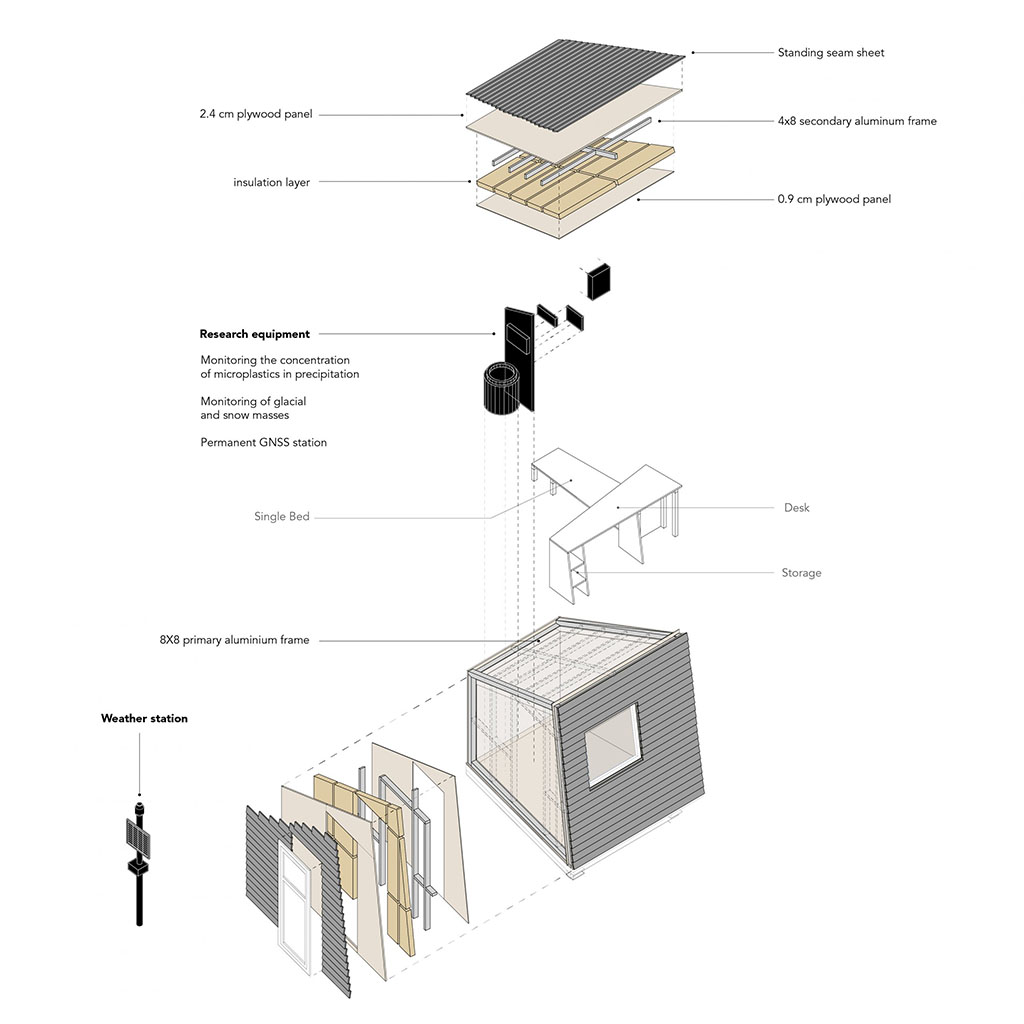
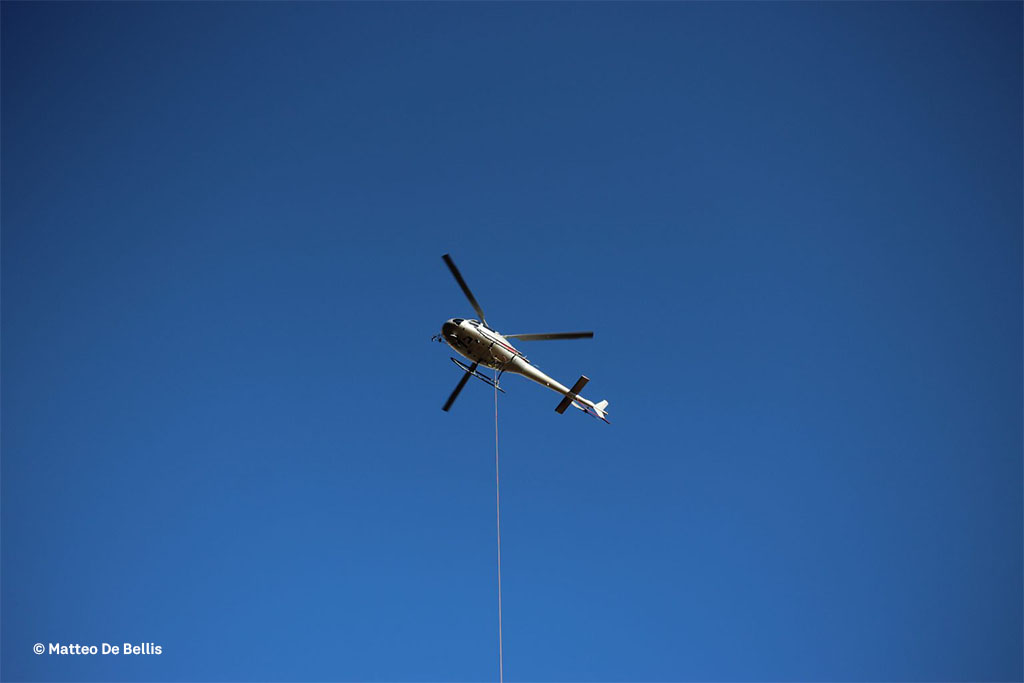
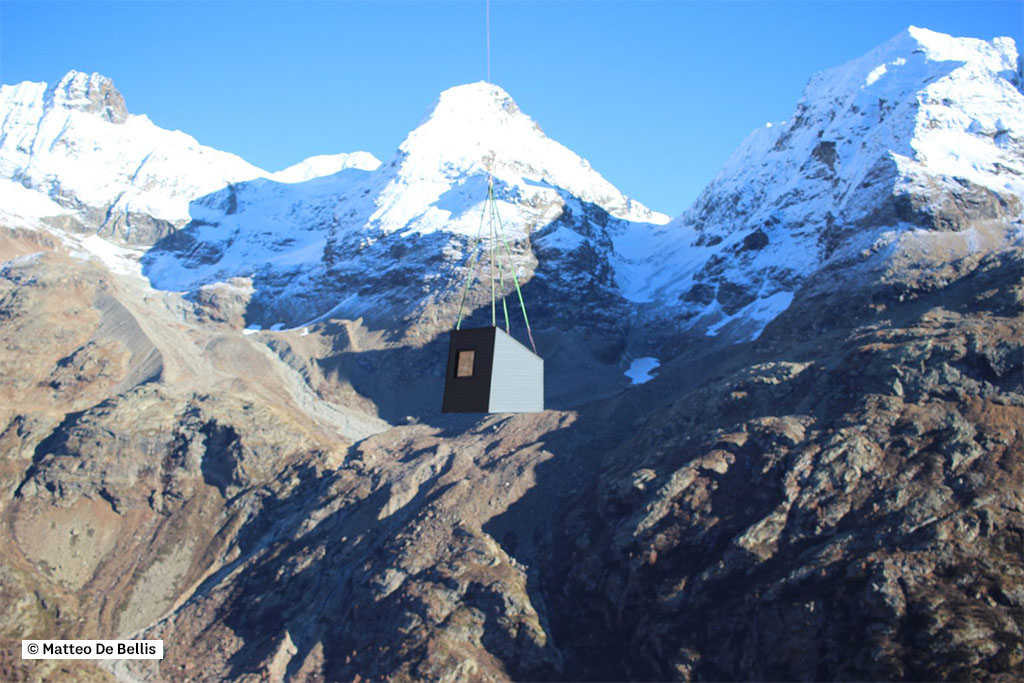
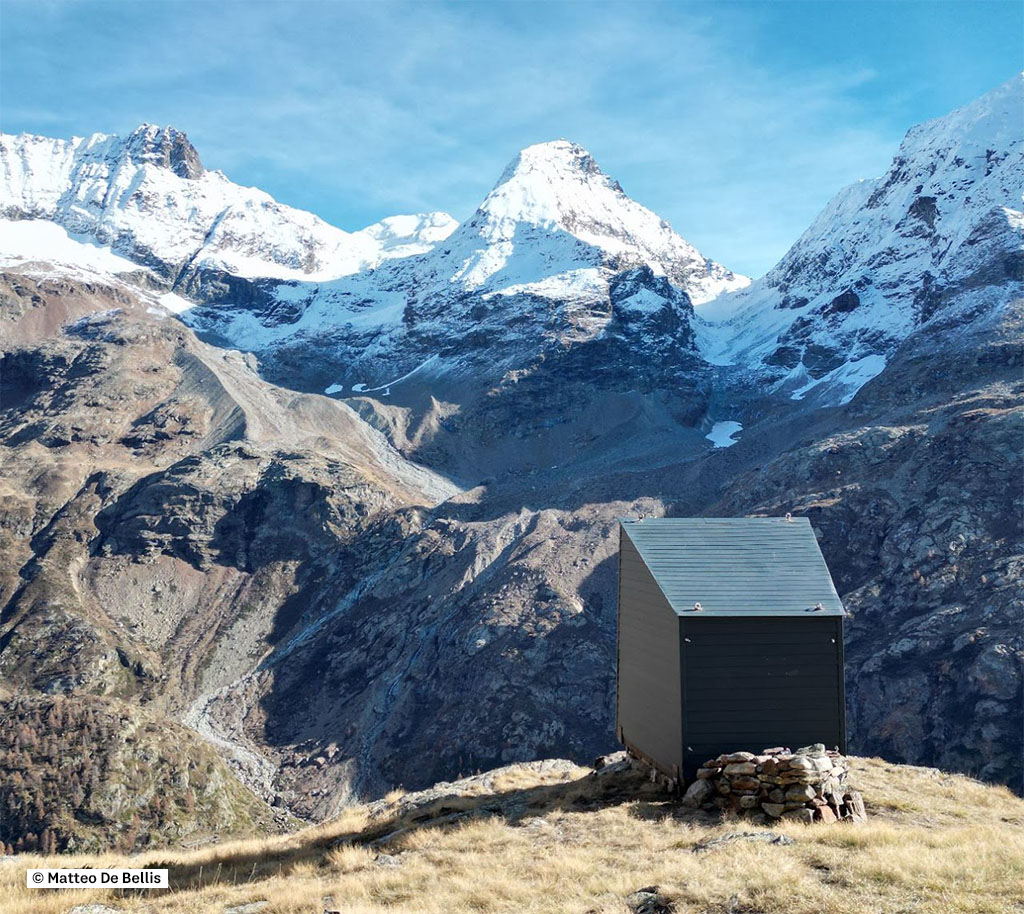
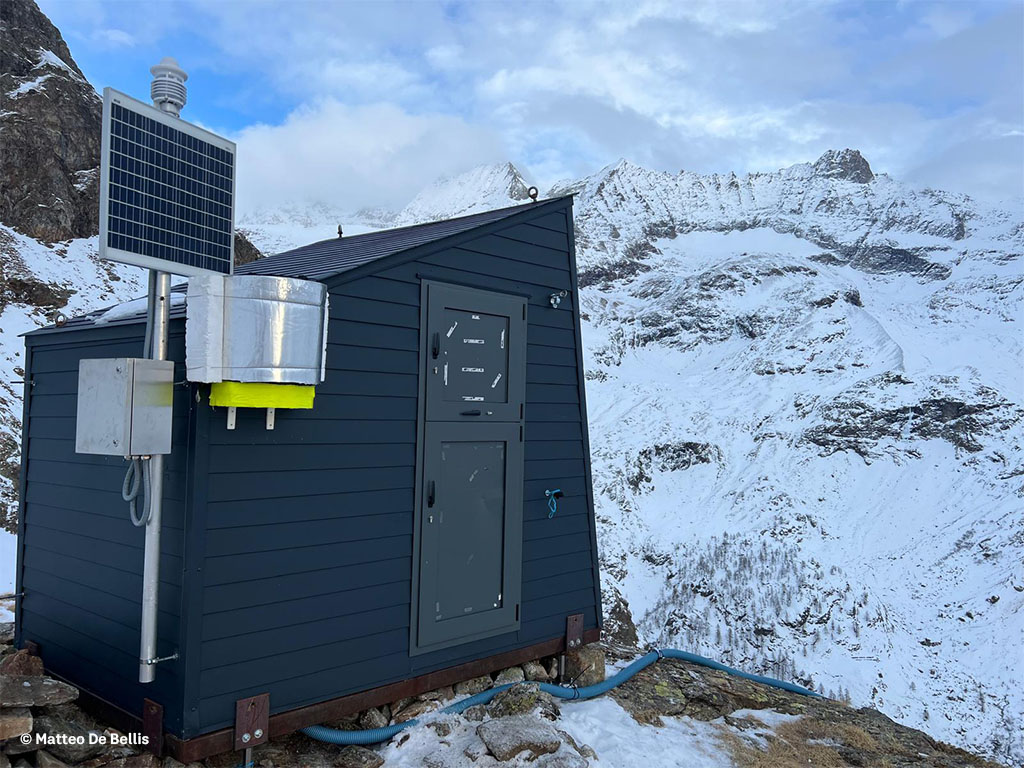
// SASSO, Valle d'Aosta, Italy - 2022/2024
SASSO (Small Alpine Shelter for Scientific Observation) is a small, compact housing module designed and built by Team Shelters to support environmental monitoring in high-altitude alpine environments. Its purpose is to facilitate the observation of changes in glacial and snow masses, the acquisition of hydro-meteorological and geomorphological data, and the surveillance of slope instability phenomena.
To fulfill these functions, SASSO is equipped with a weather station, a microplastic sampling system, instrumentation for monitoring glacial mass dynamics, a fixed GNSS station for high-precision geolocation, a photovoltaic power system for energy autonomy, and a rain gauge for precipitation measurement.

























// LEAF, Turin, Italy - 2021
“The water rises, the park replies."
Climate change is increasing hydrogeological risks across Europe, making Turin's public park highly prone to flooding and limiting its accessibility. The LEAF (Live Ecological: Adapt Floods) project proposes adaptive solutions with floating dynamic platforms, allowing citizens to enjoy the park even during high water levels. This creates two zones: the Green Park and the Blue Park. The design links the Royal Palace in the historic center with the park, forming a promenade with a continuous succession of stimuli, including theatre squares, carpentry workshops, and even standing on the surface of the water in the centre of the river.
// Bridge Concept
Turin’s public park is divided in two by the river Po: slow mobility (on foot, by bicycle) is made extremely difficult by the lack of a direct connection between the two banks. For this reason it was necessary to create a path that was both a link for people and vegetation, and a centraliser of public events, being able to host open-air cinemas and exhibition spaces within it.
// Bridge structure
The structure of the bridge allows it to adapt to the water level in a totally dynamic way without requiring forecasting. Thanks to the two load-bearing telescopic pillars - supported by floats parallel to the river, thus minimising obstruction to the flow of water - the bridge allows the perfect outflow of water, and in the case of flooding also of sediment. The 'belly' of the bridge, on the other hand, supported by the cablestayed structure, does not require any additional support points. The structure can tilt up to an angle of 6 degrees. The water pressure, enabling flotation, is applied exclusively to the floats.
// Modules Concept
The park’s five modules are designed with forms that reflect and interact with the path’s flow. The INFO MODULE, at the entrances, embraces visitors with an elevated, linear structure that aligns with the park’s approach, offering a 180-degree view. The SQUARE MODULE, the largest, deviates from the straight path, curving to symbolize its role as a hub for public events (Theatre, Market, Concert Squares), almost creating its own gravitational pull. The LAB MODULE, placed mid-path, interrupts the flow like a rock in a river, inviting visitors to observe internal activities, such as workshops or study spaces. The MOBILITY MODULE is cut from the main path, emphasizing movement and dynamism, with forms tailored for e-bike or canoe rentals. The BREAK MODULE, situated beside the path as a resting place, uses a stepped design that creates spaces for rest and interaction between park users during a lunch break.




















// Hyper Wood, Valle d'Aosta, Italy - 2022
The Alpine Arc is one of the most fragile ecosystems, both in terms of vulnerability to climate change and the socio-economic systems related to that. With a focus onachieving decarbonization goals by 2050, the project aim to develop a modern 4.0 wood industry that unites land protection authorities and local sawmills to ensure the responsible management of forest resources.
Concept
The site is located in the heart of the Alps near Mont Blanc, in an abandoned industrial area once used for mining. The site’s potential is expressed by the surrounding nature: the massive presence of coniferous forests presents easily accessible raw material of great value for a circular and sustainable economy.
Wood Production Flow
The internal layout, born from the morphology of the terrain, was developed starting from the wood production flow: the raw material is lifted by means of elevators to the upper floor following the various production and waste recycling phases; finally, the final product is returned to the storage area ready to be shipped. The production cycle pivots around the offices and research laboratory, which are acoustically isolated in a single area directly in contact with the outside. The coffee break is more pleasant to take on the terrace if it is not winter.
Double skin facade
From the lighting point of view, the industry needed large windows and light wells to maximise natural light. At the same time, however, the natural light required had to be indirect, to minimise glare during work processes: the Spatial Disturbing Glare index in fact affected 48.3% of the production area. By inserting a static wooden shading system parameterised on Grasshopper, it was possible to almost eliminate glare phenomena and at the same time have a correct amount of indirect natural light.
Energy consumption
The calculation of energy consumption in a wood-processing industry is essential for understanding the solutions to be adopted. By dividing the industry into 4 climate zones with different specific demands, it was possible to calculate the corresponding consumption that each one required. Starting from the total energy consumption required, it was possible to dimension a 60 kW photovoltaic system that would cover part of the electrical demand needed for heating and cooling of the geothermal heat pump.







// Schnitt 4478, Matterhorn, Switzerland- 2020
Personal project of a radical study of an alpine refuge. The clean cut of the architecture dialogues with the surrounding peaks, placing the person and the ethereal and desolate landscape at the center. This project was designed to also demonstrate the new communication potential for architecture. In fact, both a Virtual Reality version using Oculus technology and one for Android smartphone platforms have been developed.
























// Tétouan, Morocco - 2021
Morocco is undergoing significant transformation, with rapid urban growth in Tétouan and Martil leading to uncontrolled urban expansion. However, this development fails to address the pressing issue of climate change. The region faces increasingly critical challenges from torrential rains and severe flooding, causing significant economic damage and numerous annual casualties. The urban plan proposes a resilient, sustainable, and inclusive approach to inhabiting vulnerable areas. It demonstrates how architecture can actively respond to a dynamic and challenging context, offering innovative solutions for communities in the face of environmental and social adversity.
Urban concept
The organization of urban blocks prioritizes resilience and community. Permeable border walls are integrated to ensure efficient water drainage, while the central area of each block is designed to collect rainwater and serve as a public social space. Additionally, each private property includes a designated area for a garden and vegetable patch, promoting sustainability and self-sufficiency.
House concept
The “Raise Riad” project is inspired by traditional Moroccan living, emphasizing social life around the central patio while maintaining isolation from the outside. It reinterprets the traditional house with a modern approach, creating flood-resilient homes. The design incorporates affordable, sustainable, and traditional materials such as rammed earth and wood, combined with prefabrication techniques. The project also ensures simple construction methods to empower local businesses and craftsmen, blending cultural heritage with modern resilience and sustainability.




// 43T, Turin, Italy - 2021
The objective of the project was the energy upgrading of a building in the city of Turin, which consistently exemplified the building stock in its characteristics. Through the insertion of a dynamic double skin and a new energy management of the building - based on heat pumps and solar panels - the entire building was made energetically more efficient. The choice of materials was based on EPD certifications of laminated wood and steel and their KgCO2 equivalent content, the choice of waste materials, and above all the distance of the production site from the site. This made it possible to calculate the total embodied carbon and embodied energy according to different parameters, from the fuel used for transport to the disposal of the material, facilitated by the totally prefabricated dry construction. The final result was a saving of 43 tonnes of CO2 equivalent emitted into the atmosphere for the transport, construction, maintenance and end of life of the double skin.







// Shangai, China - 2010
Taking as a case study the Danish pavilion at EXPO 2010 in Shanghai, developed by BIG, the aim was to investigate the interrelation between parametric modelling software (Grasshopper) and BIM modelling software (Revit). Starting from the Wolfram software - which made it possible to describe the mathematical function of the architecture’s generating curve - it was possible to manage the parametric modelling of the envelope and the elevation’s perforation through Grasshopper.
Workflow Revit - Grasshopper
Using the Rhino Inside Revit plugin, it was possible to investigate what the strengths of completing parametric modelling on BIM software might be. In the case of the steel load-bearing structure, in fact, it was possible, starting from the grid created on Grasshopper, to insert IPE beams, pillars and braces from Revit. In addition, the parametrically generated surfaces were easily converted into walls, floors and ceilings with stratigraphies and materials managed directly by Revit. This integrated workflow can be a huge advantage in the future in terms of efficiency and performance of the final product.











// Mezzenile Castle, Italy - 2019
Internal areas on the European continent are becoming one of the main attractions of architecture. In the heart of the Western Alpine Arc, in the Lanzo Valleys, the objective of the Join Alps plan is to aim for the total redevelopment of these places, mending the socio-economic fabric to exploit the potential of the Alpine area in a new light. Starting from European and national funds and cross-border collaborations with the French side, it will be possible to give new life to these places, once the cradle of Belle Époque tourism.
The approach to this historic complex had to be as delicate as possible, enhancing the massiveness of the stone walls present and inserting furnishings that were the lightest and least intrusive possible. Bringing out the architecture of a castle of such unique historical value was the main objective. In addition to the inclusion of services such as restaurants, places to relax, saunas and spas located in the basement of the castle, it was decided to also include services available to the local community, cafes, libraries and projection rooms.
// Vertigo Climbing House
Taking advantage of the natural height difference already present, it was finally decided to insert an indoor climbing gym, completing the offer of the Mezzenile castle and closing the circle of the person’s psychophysical well-being. Thanks to the double height and the vast external and internal windows, it is possible to admire the athletes climbing more than 12 meters high, while remaining comfortably seated in the cafe. Or go downstairs, get your equipment and become the admired athlete yourself.













// PODS, Italy - 2020
Second prize in national competition between universities. The goal of this challenge was to completely rethink an environment for students with the new needs brought about by Covid-19. The possibility of isolating private and personal study places, simultaneously changing the configurations of the common spaces, meets the needs of students with different hobbies and study habits. The Pods App allows quick and interactive architectural changes based on the specific needs of the moment, also allowing you to save various presets of domotic panel configurations. To provide a fluid interaction with the common spaces at 360 degrees, the Pods App also allows you to have an online shopping system to better monitor even daily expenses.






// SASSO, Valle d'Aosta, Italy - 2022/2024
SASSO (Small Alpine Shelter for Scientific Observation) is a small, compact housing module designed and built by Team Shelters to support environmental monitoring in high-altitude alpine environments. Its purpose is to facilitate the observation of changes in glacial and snow masses, the acquisition of hydro-meteorological and geomorphological data, and the surveillance of slope instability phenomena.
To fulfill these functions, SASSO is equipped with a weather station, a microplastic sampling system, instrumentation for monitoring glacial mass dynamics, a fixed GNSS station for high-precision geolocation, a photovoltaic power system for energy autonomy, and a rain gauge for precipitation measurement.

























// LEAF, Turin, Italy - 2021
“The water rises, the park replies."
Climate change is increasing hydrogeological risks across Europe, making Turin's public park highly prone to flooding and limiting its accessibility. The LEAF (Live Ecological: Adapt Floods) project proposes adaptive solutions with floating dynamic platforms, allowing citizens to enjoy the park even during high water levels. This creates two zones: the Green Park and the Blue Park. The design links the Royal Palace in the historic center with the park, forming a promenade with a continuous succession of stimuli, including theatre squares, carpentry workshops, and even standing on the surface of the water in the centre of the river.
// Bridge Concept
Turin’s public park is divided in two by the river Po: slow mobility (on foot, by bicycle) is made extremely difficult by the lack of a direct connection between the two banks. For this reason it was necessary to create a path that was both a link for people and vegetation, and a centraliser of public events, being able to host open-air cinemas and exhibition spaces within it.
// Bridge structure
The structure of the bridge allows it to adapt to the water level in a totally dynamic way without requiring forecasting. Thanks to the two load-bearing telescopic pillars - supported by floats parallel to the river, thus minimising obstruction to the flow of water - the bridge allows the perfect outflow of water, and in the case of flooding also of sediment. The 'belly' of the bridge, on the other hand, supported by the cablestayed structure, does not require any additional support points. The structure can tilt up to an angle of 6 degrees. The water pressure, enabling flotation, is applied exclusively to the floats.
// Modules Concept
The park’s five modules are designed with forms that reflect and interact with the path’s flow. The INFO MODULE, at the entrances, embraces visitors with an elevated, linear structure that aligns with the park’s approach, offering a 180-degree view. The SQUARE MODULE, the largest, deviates from the straight path, curving to symbolize its role as a hub for public events (Theatre, Market, Concert Squares), almost creating its own gravitational pull. The LAB MODULE, placed mid-path, interrupts the flow like a rock in a river, inviting visitors to observe internal activities, such as workshops or study spaces. The MOBILITY MODULE is cut from the main path, emphasizing movement and dynamism, with forms tailored for e-bike or canoe rentals. The BREAK MODULE, situated beside the path as a resting place, uses a stepped design that creates spaces for rest and interaction between park users during a lunch break.




















// Hyper Wood, Valle d'Aosta, Italy - 2022
The Alpine Arc is one of the most fragile ecosystems, both in terms of vulnerability to climate change and the socio-economic systems related to that. With a focus onachieving decarbonization goals by 2050, the project aim to develop a modern 4.0 wood industry that unites land protection authorities and local sawmills to ensure the responsible management of forest resources.
Concept
The site is located in the heart of the Alps near Mont Blanc, in an abandoned industrial area once used for mining. The site’s potential is expressed by the surrounding nature: the massive presence of coniferous forests presents easily accessible raw material of great value for a circular and sustainable economy.
Wood Production Flow
The internal layout, born from the morphology of the terrain, was developed starting from the wood production flow: the raw material is lifted by means of elevators to the upper floor following the various production and waste recycling phases; finally, the final product is returned to the storage area ready to be shipped. The production cycle pivots around the offices and research laboratory, which are acoustically isolated in a single area directly in contact with the outside. The coffee break is more pleasant to take on the terrace if it is not winter.
Double skin facade
From the lighting point of view, the industry needed large windows and light wells to maximise natural light. At the same time, however, the natural light required had to be indirect, to minimise glare during work processes: the Spatial Disturbing Glare index in fact affected 48.3% of the production area. By inserting a static wooden shading system parameterised on Grasshopper, it was possible to almost eliminate glare phenomena and at the same time have a correct amount of indirect natural light.
Energy consumption
The calculation of energy consumption in a wood-processing industry is essential for understanding the solutions to be adopted. By dividing the industry into 4 climate zones with different specific demands, it was possible to calculate the corresponding consumption that each one required. Starting from the total energy consumption required, it was possible to dimension a 60 kW photovoltaic system that would cover part of the electrical demand needed for heating and cooling of the geothermal heat pump.







// Schnitt 4478, Matterhorn, Switzerland- 2020
Personal project of a radical study of an alpine refuge. The clean cut of the architecture dialogues with the surrounding peaks, placing the person and the ethereal and desolate landscape at the center. This project was designed to also demonstrate the new communication potential for architecture. In fact, both a Virtual Reality version using Oculus technology and one for Android smartphone platforms have been developed.
























// Tétouan, Morocco - 2021
Morocco is undergoing significant transformation, with rapid urban growth in Tétouan and Martil leading to uncontrolled urban expansion. However, this development fails to address the pressing issue of climate change. The region faces increasingly critical challenges from torrential rains and severe flooding, causing significant economic damage and numerous annual casualties. The urban plan proposes a resilient, sustainable, and inclusive approach to inhabiting vulnerable areas. It demonstrates how architecture can actively respond to a dynamic and challenging context, offering innovative solutions for communities in the face of environmental and social adversity.
Urban concept
The organization of urban blocks prioritizes resilience and community. Permeable border walls are integrated to ensure efficient water drainage, while the central area of each block is designed to collect rainwater and serve as a public social space. Additionally, each private property includes a designated area for a garden and vegetable patch, promoting sustainability and self-sufficiency.
House concept
The “Raise Riad” project is inspired by traditional Moroccan living, emphasizing social life around the central patio while maintaining isolation from the outside. It reinterprets the traditional house with a modern approach, creating flood-resilient homes. The design incorporates affordable, sustainable, and traditional materials such as rammed earth and wood, combined with prefabrication techniques. The project also ensures simple construction methods to empower local businesses and craftsmen, blending cultural heritage with modern resilience and sustainability.




// 43T, Turin, Italy - 2021
The objective of the project was the energy upgrading of a building in the city of Turin, which consistently exemplified the building stock in its characteristics. Through the insertion of a dynamic double skin and a new energy management of the building - based on heat pumps and solar panels - the entire building was made energetically more efficient. The choice of materials was based on EPD certifications of laminated wood and steel and their KgCO2 equivalent content, the choice of waste materials, and above all the distance of the production site from the site. This made it possible to calculate the total embodied carbon and embodied energy according to different parameters, from the fuel used for transport to the disposal of the material, facilitated by the totally prefabricated dry construction. The final result was a saving of 43 tonnes of CO2 equivalent emitted into the atmosphere for the transport, construction, maintenance and end of life of the double skin.







// Shangai, China - 2010
Taking as a case study the Danish pavilion at EXPO 2010 in Shanghai, developed by BIG, the aim was to investigate the interrelation between parametric modelling software (Grasshopper) and BIM modelling software (Revit). Starting from the Wolfram software - which made it possible to describe the mathematical function of the architecture’s generating curve - it was possible to manage the parametric modelling of the envelope and the elevation’s perforation through Grasshopper.
Workflow Revit - Grasshopper
Using the Rhino Inside Revit plugin, it was possible to investigate what the strengths of completing parametric modelling on BIM software might be. In the case of the steel load-bearing structure, in fact, it was possible, starting from the grid created on Grasshopper, to insert IPE beams, pillars and braces from Revit. In addition, the parametrically generated surfaces were easily converted into walls, floors and ceilings with stratigraphies and materials managed directly by Revit. This integrated workflow can be a huge advantage in the future in terms of efficiency and performance of the final product.











// Mezzenile Castle, Italy - 2019
Internal areas on the European continent are becoming one of the main attractions of architecture. In the heart of the Western Alpine Arc, in the Lanzo Valleys, the objective of the Join Alps plan is to aim for the total redevelopment of these places, mending the socio-economic fabric to exploit the potential of the Alpine area in a new light. Starting from European and national funds and cross-border collaborations with the French side, it will be possible to give new life to these places, once the cradle of Belle Époque tourism.
The approach to this historic complex had to be as delicate as possible, enhancing the massiveness of the stone walls present and inserting furnishings that were the lightest and least intrusive possible. Bringing out the architecture of a castle of such unique historical value was the main objective. In addition to the inclusion of services such as restaurants, places to relax, saunas and spas located in the basement of the castle, it was decided to also include services available to the local community, cafes, libraries and projection rooms.
// Vertigo Climbing House
Taking advantage of the natural height difference already present, it was finally decided to insert an indoor climbing gym, completing the offer of the Mezzenile castle and closing the circle of the person’s psychophysical well-being. Thanks to the double height and the vast external and internal windows, it is possible to admire the athletes climbing more than 12 meters high, while remaining comfortably seated in the cafe. Or go downstairs, get your equipment and become the admired athlete yourself.













// PODS, Italy - 2020
Second prize in national competition between universities. The goal of this challenge was to completely rethink an environment for students with the new needs brought about by Covid-19. The possibility of isolating private and personal study places, simultaneously changing the configurations of the common spaces, meets the needs of students with different hobbies and study habits. The Pods App allows quick and interactive architectural changes based on the specific needs of the moment, also allowing you to save various presets of domotic panel configurations. To provide a fluid interaction with the common spaces at 360 degrees, the Pods App also allows you to have an online shopping system to better monitor even daily expenses.
